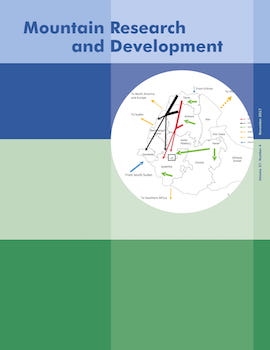La Huella del Cambio Global en Sierra Nevada: Retos para la Conservación, edited by R.J. Zamora Rodríguez, A.J. Pérez Luque, F.J. Bonet García, J.M. Barea Azcón, and R. Aspizua Cantón. Sevilla, Spain: Consejería de Medio Ambiente y Ordenación del Territorio, Junta de Andalucía, 2015. 207 pp. Free download at http://www.mapama.gob.es/imagenes/es/dossierelcambio globalsierranevada_tcm7-401051.pdf; hardcopy available upon request from pn.snevada.cmaot@juntadeandalucia.es. ISBN 978-84-338-5814-6.
Global Change Impacts in Sierra Nevada: Challenges for Conservation, edited by R.J. Zamora Rodríguez, A.J. Pérez Luque, F.J. Bonet García, J.M. Barea Azcón, and R. Aspizua Cantón. Sevilla, Spain: Department of the Environment and Urban Planning, Junta de Andalucía, 2016. 207 pp. Free download at http://www.reginozamora.es/wp-content/uploads/2010/04/Global-Change-Impacts-Sierra-Nevada.pdf; hardcopy available upon request from pn.snevada.cmaot@juntadeandalucia.es. ISBN 978-84-338-5960-0.
This beautifully illustrated book addresses the challenges for conservation imposed by global change in the Sierra Nevada region of Southern Spain. The book reports the first set of results, on a number of diverse and complementary topics, of the long-term observatory for global change, located primarily within the Sierra Nevada National Park and Biosphere Reserve. This is part of the larger Natural Space of Sierra Nevada, which was included on the Green List of Protected and Conserved Areas of the International Union for Conservation of Nature in 2014. The book results from the joint efforts of many scientific groups, led by several departments at the University of Granada, the park authorities, the autonomous government of Andalusia, the Spanish Ministry for Environment, and several foundations and organizations that support, in one way or another, the environmental monitoring of the many and highly valuable mountain ecosystems of the Sierra Nevada.
The book begins with a summary of the vision of the observatory, where monitoring and scientific knowledge represent the foundations of management and conservation, which is particularly threatened by intense environmental changes driven by human activities. Following this introduction, Chapter 1 presents climatic trends over the last 5 decades, showing a clear reduction in precipitation and a complex oscillation of temperatures, which tend to follow regional and global trends. Chapter 2 then addresses one of the first and most obvious indicators of climatic changes, ice and snow cover, using data on snow, ice, and soil from sensors, local observations, and satellite images. The last, small glacial fragments on this Mediterranean mountain are disappearing and the snow cover is decreasing because of the combined effects of reduced precipitation and warmer temperatures. As expected, permafrost is vanishing and the duration of snow cover is becoming shorter and shorter at all sampling points.
The other big driver of global change, land use change, is addressed explicitly in Chapter 3, in combination with quantitative analyses of changes in vegetation cover. Palynological studies are combined with paleoecological and paleolimnological studies to illustrate changes in the main plant communities over long periods. Social–economic changes and the changing ways of exploiting water, a key resource cleverly managed since Arabic and medieval times, are presented and discussed well, with plenty of images and graphs. The authors then develop the notion of the influence of previous land history and management on current restoration practices.
Chapter 4 focuses on the impacts of global change on mountain rivers and water bodies, providing valuable and detailed data on the impacts on physical and chemical characteristics, invertebrates, fish and herbivores, and algal populations. A clear depiction of the population trends of key vertebrates (birds, amphibians, and mammals) and flora elements is then provided and discussed in Chapter 5. Some specific studies on topics such as altitudinal shifts of insects in response to warming provide up-to-date results from some of the most active research efforts carried out in the area.
In Chapters 6 and 7, the book completes the scientific picture with 2 classic ecological studies of climate change impacts: the changing phenology of plants and butterflies and the carbon balances in altered ecosystems. Not only increases in atmospheric carbon dioxide and temperatures but also changes in water vapor are affecting the productivity of these mountain ecosystems, resulting in many changes in the timing of key events, such as flowering or initiation of butterfly reproduction.
The book finishes with 3 chapters devoted to management and conservation. From the history of human activities to the current management of natural resources, and from particular case studies following important forest fires to global conclusions on how to reconcile conservation with ongoing human activities in the area, this last section of the book lives up to expectations. In Chapter 10, conclusions from restoration practices and long-term monitoring of pests and diseases are combined with considerations of changing social–economic demands and ecosystem services to provide a convincing essay on how to address the challenge in the title of the book.
The book—and beyond the book, the Natural Space of Sierra Nevada—is undoubtedly a reference for ecologists, naturalists, and citizens interested in how human activities affect mountain ecosystems, as well as for land managers and policymakers.





